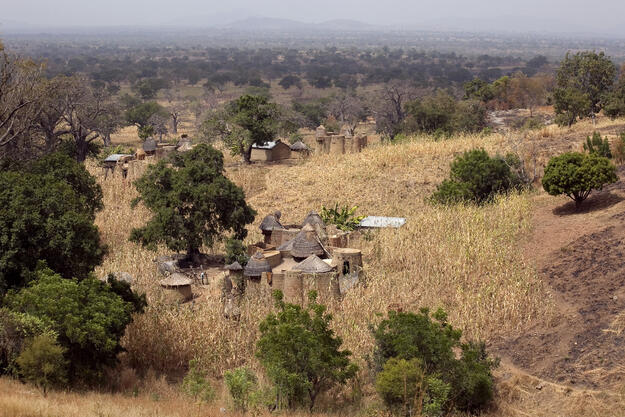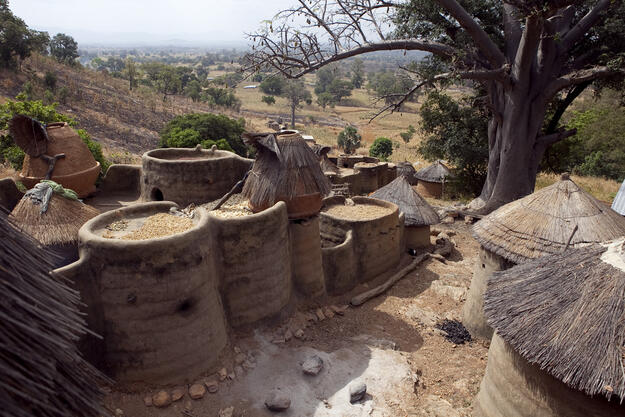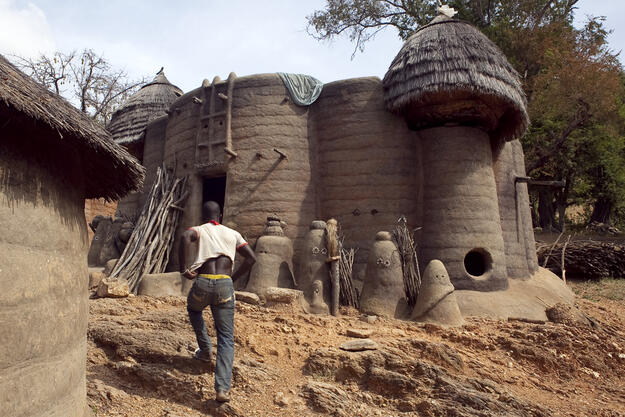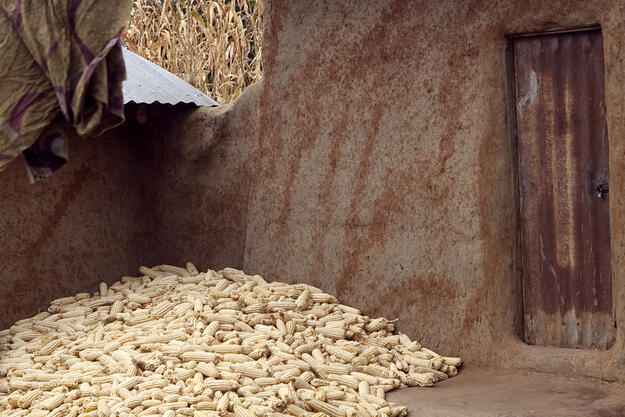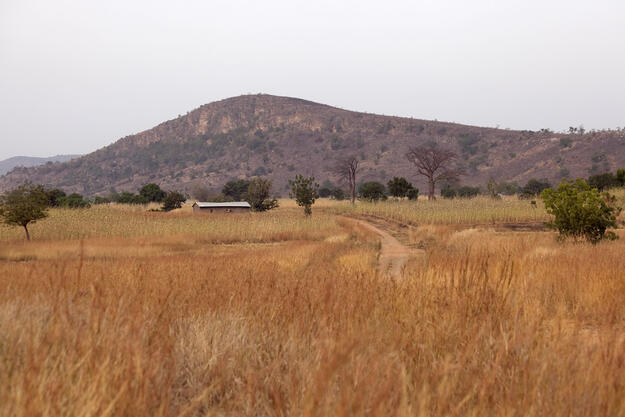Koutammakou, Land of the Batammariba
Site History and Significance
The Batammariba People
The Batammariba people of modern-day Benin and Togo first arrived in the mountainous savanna region that is now their homeland during the seventeenth or eighteenth century. On the move to escape the threat of subordination to other groups, the Batammariba brought with them a sense of independence and strong cultural identity, anchored in their building traditions. The Batammariba name, used by the Batammariba themselves, means “those who are the real architects of earth,” pointing to the foundational place of earthen construction traditions for Batammariba society and culture. These traditions are expressed in the takienta, the Batammariba house, and the setting for all Batammariba life.
The Takienta Building Tradition
The takienta consists of a cluster of mud structures—the typical house contains around eight—girdled together by a continuous mud wall. Each structure has a dedicated function, housing kitchens, bedrooms, storerooms, and granaries. The mud walls are built in layers, resulting in a pattern of horizontal stripes. Some buildings have flat roofs behind a low parapet, while others are surmounted by a thatched roof. The sikien—plural of takienta—depend on periodic renewal of their smooth exterior plaster, which protects the earthen core from rain. Whenever a takienta becomes unfit for habitation, Batammariba tradition requires that its old earthen core be incorporated into the new dwelling. Scholars have documented how the Batammariba conceive of their dwellings in anthropomorphic terms, likening them to men and women and naming their components after the parts of the human body.
Our Involvement
2020 World Monuments Watch
On the Togo side of the border, the sikien have become icons of the Togolese state, which sought to protect Koutammakou, land of the Batammariba, through inscription on the World Heritage List as a cultural landscape; the site was awarded this status in 2004. But legal protections and the traditional principles of heritage management alone are not enough to ensure the perpetuation of a living cultural tradition underpinned by indigenous knowledge. The 2020 World Monuments Watch called for new focus on the Batammariba people’s livelihoods and the factors that are contributing to social change for this community. It is only by understanding and mitigating the factors that are inhibiting the transmission of traditional knowledge related to house construction that the takienta building tradition will endure as the living product of a distinctive cultural expression.
One of Seven Sites Awarded Funding by American Express
In September 2020, American Express announced $1 million in funding to support preservation efforts at seven 2020 Watch sites. Included among these was Koutammakou, in Benin and Togo. In November 2020, WMF initiated a conservation project to document and assess traditional settlements in the Benin side of Koutammakou and carry out physical conservation at a selection of sikien alongside local artisans. Given the essential role of sustainability in this rich landscape, the project includes the planting of 5,000 trees to provide a continued supply of the necessary wooden structural elements. In 2023, UNESCO announced that it was expanding World Heritage status to include the Beninese portion of Koutammakou, which comprises the majority of the cultural landscape. WMF played a key role in advocating and laying the foundation for this change, ensuring that protections extend to both sides of the Togo-Benin border.
Learn more
World Monuments Fund safeguards cultural heritage around the globe, ensuring our treasured places are preserved for present and future generations.
Sign up for our newsletter to receive regular updates on our projects, stories from the field, upcoming events, and more!
![]()
World Monuments Fund’s work at Koutammakou has been made possible, in part, by support from the U.S. Ambassadors Fund for Cultural Preservation (AFCP), the U.S. Embassy Cotonou, and American Express.

